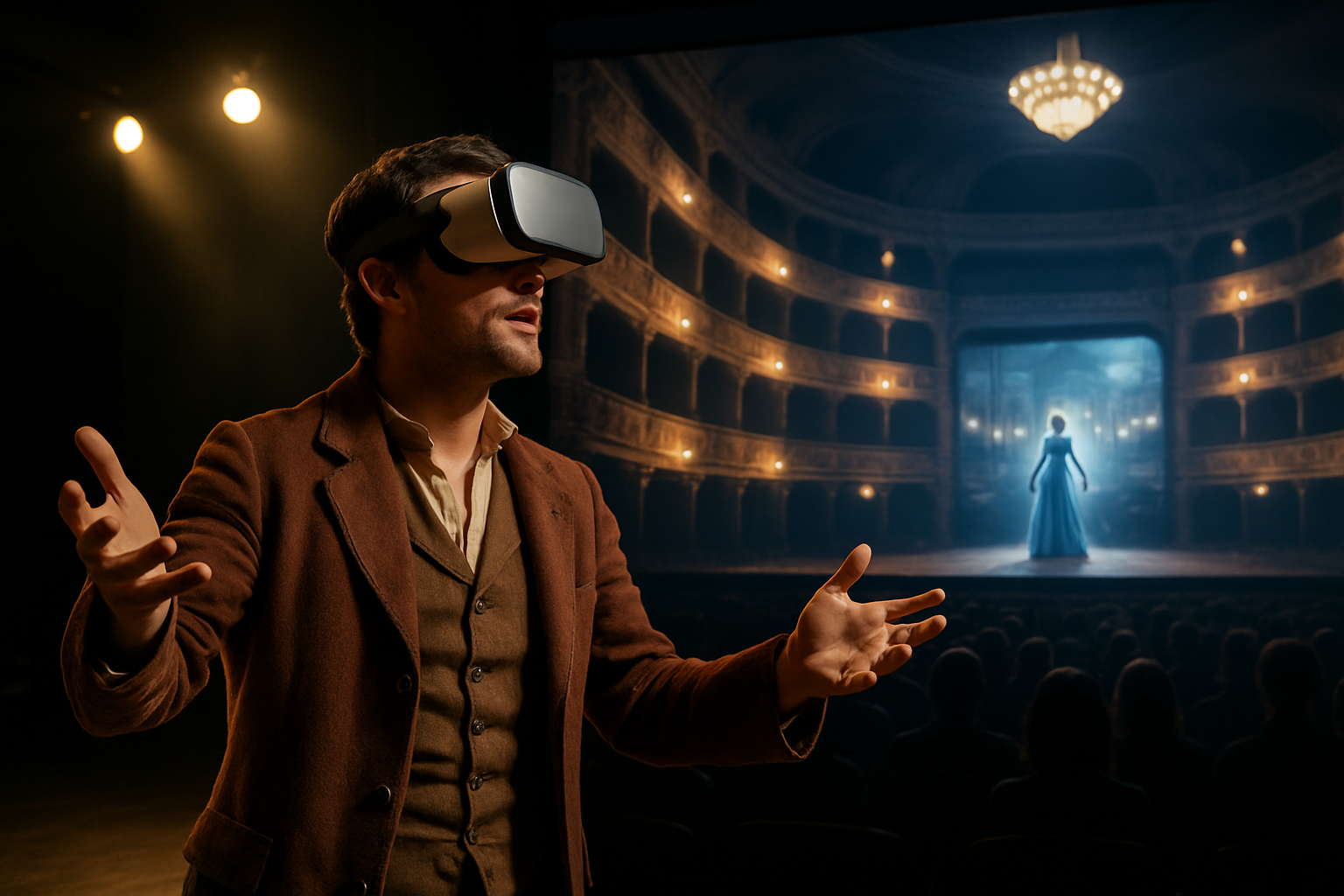Holographic Stagecraft: Redefining Live Performance
The fusion of cutting-edge technology and traditional theater is reshaping the landscape of live performance. Holographic stagecraft, a groundbreaking approach to scenic design and character portrayal, is pushing the boundaries of what's possible on stage. This innovative technique blends reality with digital illusion, creating immersive experiences that captivate audiences in ways never before imagined. As theaters worldwide grapple with evolving audience expectations and technological advancements, holographic stagecraft emerges as a transformative force, promising to revolutionize the very essence of live entertainment.

In the early 2010s, pioneering productions began incorporating holographic elements, primarily as a novelty or special effect. These initial forays, while impressive, were often limited in scope and integration with live performers. As the technology matured, so did its potential for storytelling and artistic expression.
Blurring the Lines Between Reality and Illusion
Holographic stagecraft’s most profound impact lies in its ability to blur the lines between the tangible and the virtual. Unlike traditional set designs or projection mapping, holographic elements can interact seamlessly with live actors, creating a hybrid performance space that defies conventional boundaries.
Actors can now share the stage with lifelike digital characters, historical figures, or fantastical creatures. Scenery can transform instantly, transporting audiences from bustling cityscapes to serene forests in the blink of an eye. This fluidity of environment and character opens up new narrative possibilities, allowing directors and playwrights to explore stories that were once impossible to stage.
Technical Marvels Behind the Magic
The technical infrastructure required for holographic stagecraft is a marvel in itself. High-luminosity projectors, often arranged in arrays, work in concert with specialized screens or mist surfaces to create three-dimensional images that appear to float in mid-air. Advanced motion tracking systems ensure that these projections maintain proper perspective and scale as performers move about the stage.
Real-time rendering engines, similar to those used in video game development, generate the holographic content on the fly. This allows for dynamic interactions between live actors and digital elements, as well as the ability to adapt performances in real-time based on audience reactions or unexpected events.
Artistic Implications and Creative Freedom
For theater artists, holographic stagecraft represents an unprecedented expansion of their creative palette. Set designers can now conceive of environments limited only by their imagination, free from the constraints of physical materials and stage mechanics. Costume designers collaborate with digital artists to create ethereal garments that shift and transform throughout a performance.
Directors find themselves at the helm of productions that seamlessly blend live action with digital spectacle, orchestrating a new form of theatrical symphony. Actors, too, must adapt their craft, learning to interact convincingly with holographic scene partners and navigate ever-changing digital landscapes.
Challenges and Controversies
Despite its potential, holographic stagecraft is not without its challenges and controversies. The high cost of implementation remains a significant barrier for many theaters, potentially widening the gap between well-funded institutions and smaller, independent venues. There are also concerns about the authenticity of performances that rely heavily on digital elements, with some purists arguing that it dilutes the essence of live theater.
Technical glitches, while increasingly rare, can still disrupt performances and break the audience’s suspension of disbelief. The reliance on complex systems also introduces new points of failure that traditional theater doesn’t contend with, requiring specialized technicians and backup plans.
The Future of Live Performance
As holographic stagecraft continues to evolve, its influence on live performance is likely to grow. We may see the emergence of new theatrical forms that fully embrace the technology, creating immersive experiences that go beyond traditional storytelling. The line between theater and other media, such as video games and virtual reality, may become increasingly blurred.
There’s also potential for holographic stagecraft to democratize access to live performance. Remote audiences could potentially experience holographic versions of productions, breaking down geographical barriers and expanding the reach of theater companies.
Conclusion: A New Act in Theater’s History
Holographic stagecraft represents a significant leap forward in the centuries-long evolution of theatrical arts. It challenges our perceptions of what’s possible on stage and invites us to reimagine the boundaries of live performance. As the technology matures and becomes more accessible, we stand on the brink of a new era in theater—one where the magic of live performance is enhanced by the marvels of the digital age.
While it’s clear that holographic stagecraft will play a crucial role in shaping the future of theater, it’s equally important to remember that at its core, theater is about human connection and storytelling. The true test of this technology will be its ability to enhance these fundamental aspects, creating experiences that are not just visually spectacular, but emotionally resonant and intellectually engaging. As we embrace this new chapter in theatrical history, the stage is set for a fascinating interplay between tradition and innovation, reality and illusion, the tangible and the virtual.





